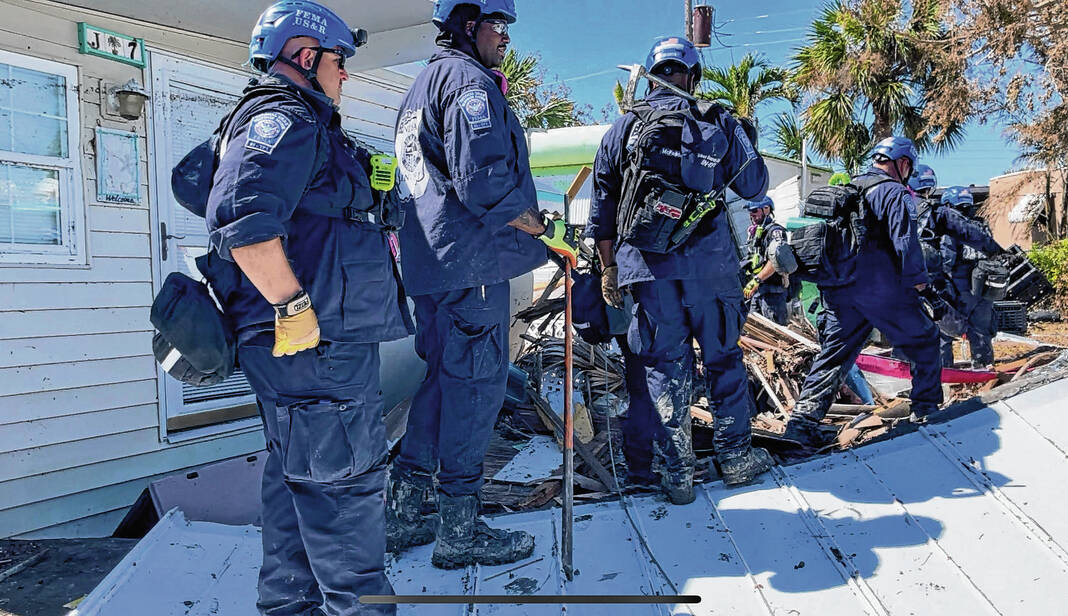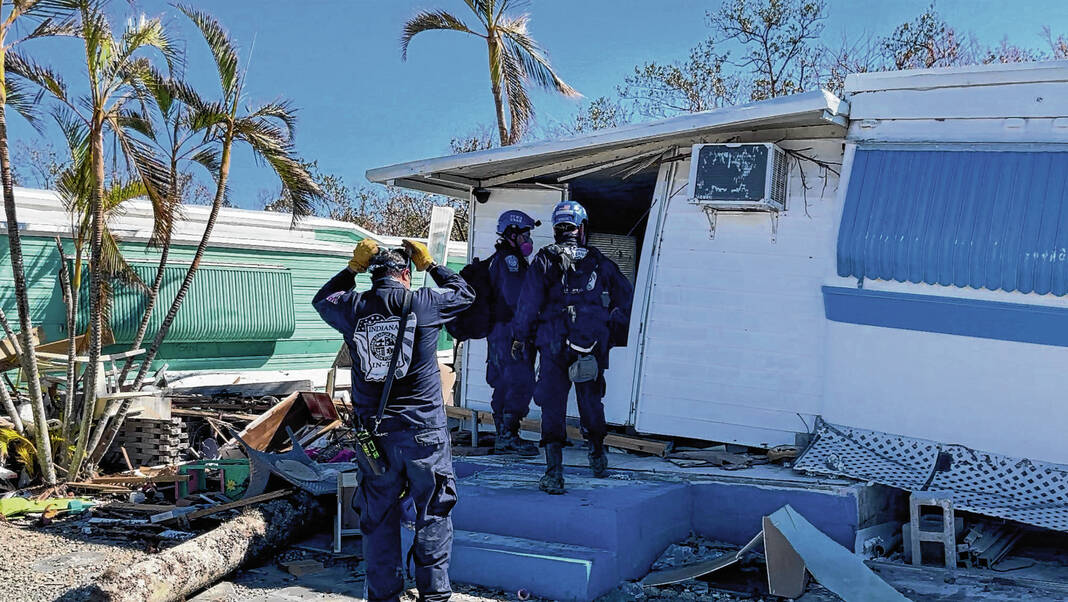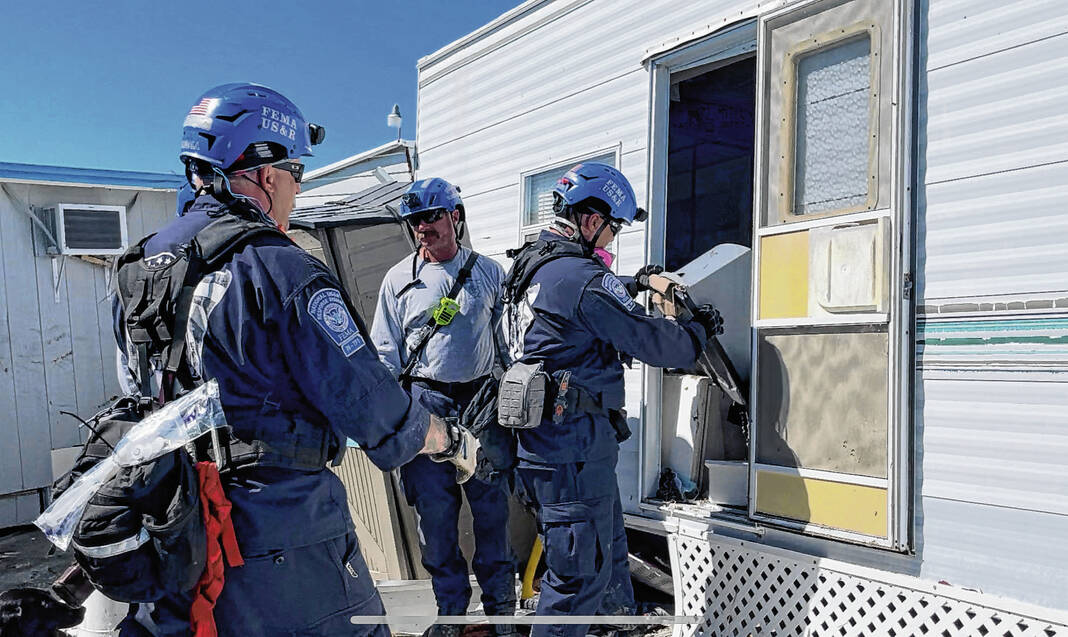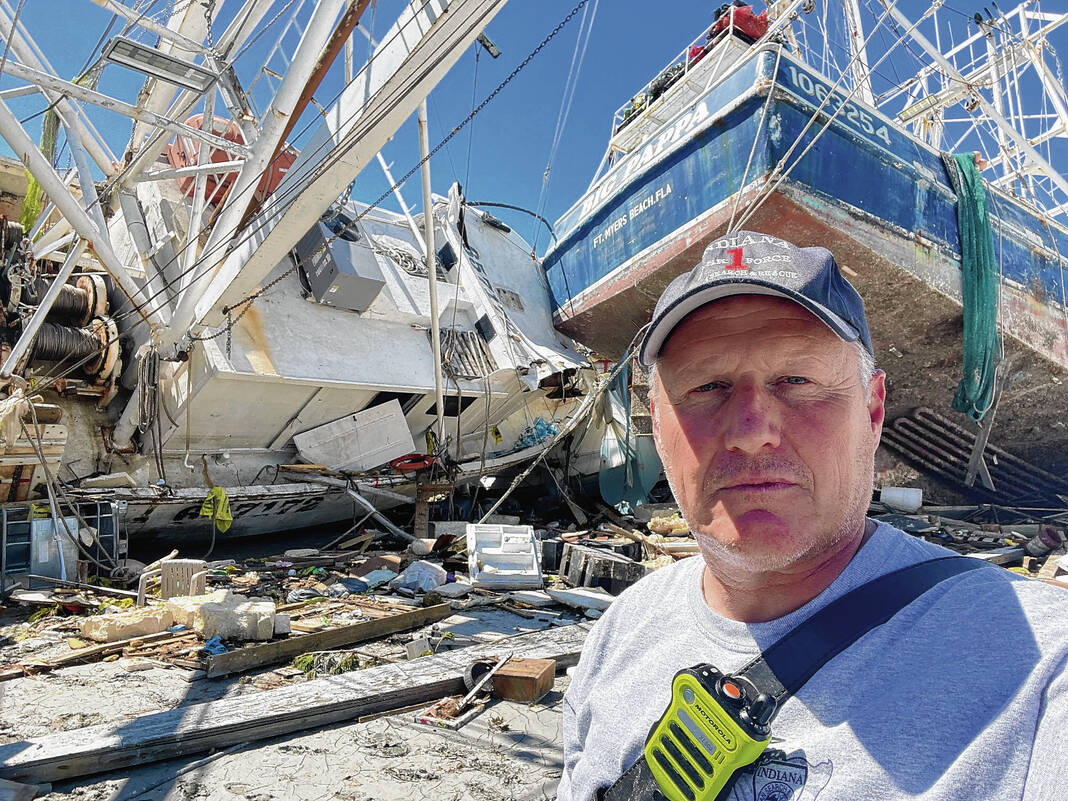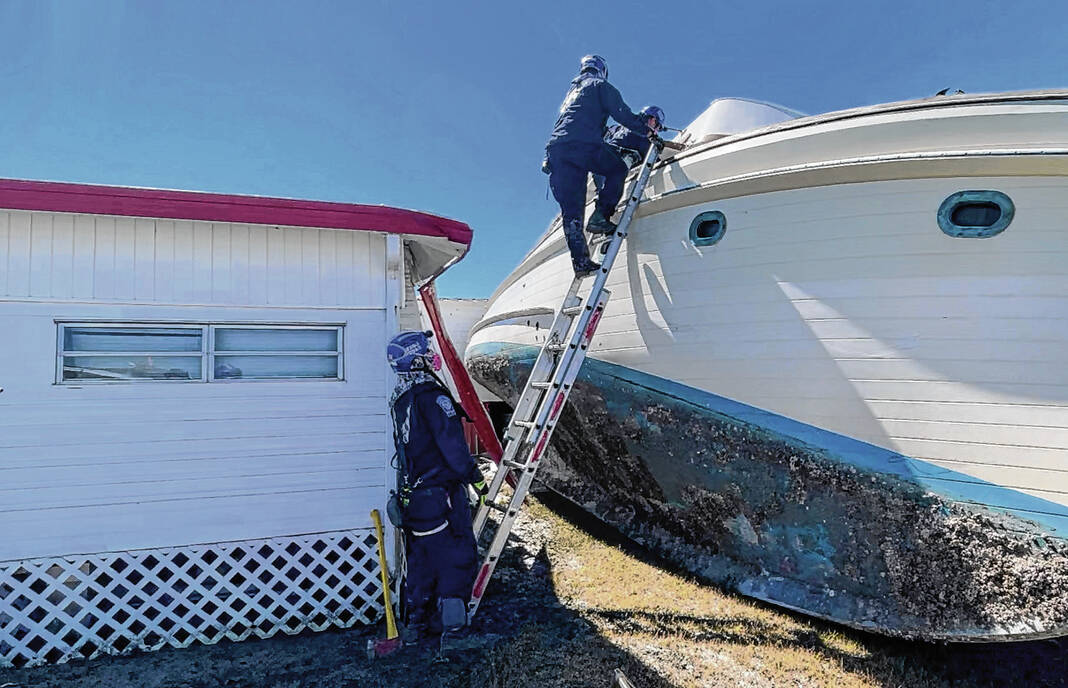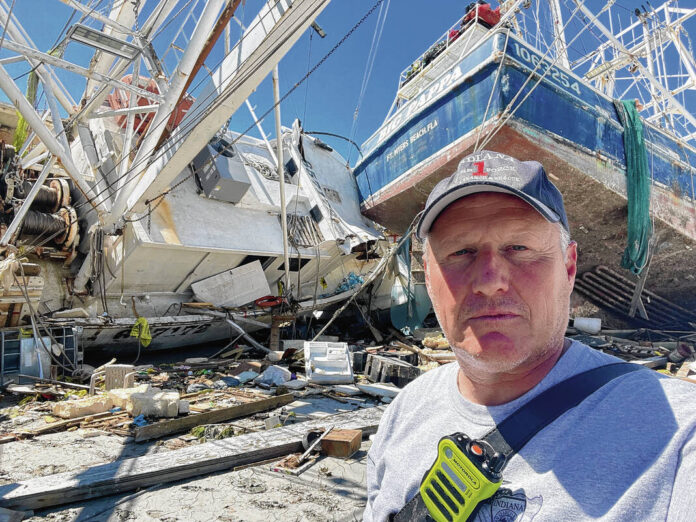
Mike Pruitt, deputy chief of the Bargersville Community Fire Department, takes a picture in front of boats damaged by Hurricane Ian in Fort Myers Beach, Florida. Pruitt was deployed to serve as both a safety officer and as a public information officer for Indiana Task Force 1 search and rescue teams responding in the aftermath of the hurricane.
Submitted
A local firefighter has seen first-hand the damage Hurricane Ian left in southern Florida.
Mike Pruitt, deputy chief of the Bargersville Community Fire Department, has been deployed with Indiana Task Force 1 for nearly a week as a safety officer and public information officer for Indiana’s Federal Emergency Management Agency Urban Search and Rescue team. Eighty-five members of the task force were activated and deployed to Alabama in advance of Hurricane Ian before making their way to Florida in the aftermath of the hurricane.
Hurricane Ian carved a path of destruction from Florida to the Carolinas last week. A Category 4 storm, Ian struck with 150 mph winds that shredded buildings and homes and destroyed power grids. At least 79 people have been confirmed dead from the storm: 71 in Florida, five in North Carolina and three in Cuba, as Ian made landfall on the Caribbean island on Sept. 27 and in Florida a day later.
Search and rescue efforts were still ongoing Monday in Florida. More than 1,600 people have been rescued statewide, according to Florida’s emergency management agency.
The number of storm-related deaths have risen in recent days because of the dangers posed by cleaning up and as search and rescue crews comb through some of the hardest-hit areas of Florida. Officials said that as of Monday, more than 1,900 people had been rescued throughout the state.
Storm surges and heavy rainfall flooded roadways and washed-out bridges to barrier islands, leaving many people isolated amid limited cellphone service and a lack of basic amenities such as water, electricity and the internet. Officials warned that the situation in many areas isn’t expected to improve for several days because waterways are overflowing leaving the rain that fell with nowhere to go.
Since the task force arrived in southern Florida, they’ve mainly been conducting search-and-rescue operations in Fort Myers and Fort Myers Beach. First, they conducted rapid searches to find victims, rescue them and evacuate them. Now the group is conducting in-depth primary searches where they go from building to building.
“We have to look at indicators — Are there cars there? Does it look like they left? — then we force entry otherwise,” Pruitt said.
Members of the task force also speak with those who stayed behind to see if they knew if someone was home and where they went. The data the task force collects is then transferred to local, state and FEMA officials, along with photos of the damage, Pruitt said.
The task force has also coordinated resources for when they find victims or hazardous materials, he said.
This is Pruitt’s 15th deployment as part of the task force. Despite all that experience, what he saw in the Fort Myers area was shocking.
“It’s unbelievable. The destruction, mostly from the tidal surge accompanied by the wind here … is the worst I’ve seen on any storm I’ve responded to,” Pruitt said. “Looking at the total mileage of damage by flood and wind, it’s going to take years to build this community back.”
Pruitt compared the damage in the Fort Myers area to what he saw in the aftermath of Hurricane Michael, a Category 5 storm that hit Mexico Beach, Florida in 2018.
Ian’s damage seems so much worse, he said.
“I was in Mexico Beach during Hurricane Michael and it literally moved the earth. It was one of the worst I’ve seen,” Pruitt said. “(Ian) is about 10 times worse than that one when you look at the damage and the types of damage and the flood surge. It’s bad.”
Members of the task force have been walking the streets of communities on foot because many roads are blocked or destroyed. Federal, state and local teams are combing through neighborhoods to give residents accountability and stability to start the recovery process, which will take a long time, he said.
“I’ve been to Fort Myers Beach before, and I didn’t recognize it. It’s unrecognizable,” Pruitt said. “Some newer construction withstood the storm, older construction did not.”
The magnitude of the damage and destruction is hard to comprehend, he said. Task force members often hear personal stories from the people who stayed behind and how they lost neighbors.
“To hear those stories and hear people say they wish they didn’t stay behind because they didn’t think they were going to survive,” Pruitt said. “These are common stories we hear from people who stay behind.”
For members of the task force, working in the debris fields and on collapsed structures is very dangerous. Right now mold is starting to become an issue, so members of the task force have had to use respiratory protection to prevent possible health problems, Pruitt said.
Members of the task force are also trying to avoid dehydration.
“It’s easy for our people to get dehydrated, so we have to constantly ship in water,” Pruitt said.
Reestablishing communications was a real struggle in the beginning. The hurricane wiped out nearly all forms of communication, except for maybe radio, he said.
“So you have that disaster, then you have the disaster after the disaster and people start flooding back in and there’s no control; the electricity is out,” Pruitt said. “Law enforcement is working in droves to direct traffic and keep people out who don’t have an interest here.”
Power companies and fuel trucks have also come in to reestablish utilities and provide resources. Before Ian’s landfall in Florida, Duke Energy mobilized an initial 10,000 lineworkers, tree professionals and damage assessment and support personnel in Florida to respond to outages. Additional support teams from Indiana, Kentucky and Ohio were also sent to assist, according to the utility.
A few stores outside of the Fort Myers Beach area have also begun to reopen, along with relief centers, Pruitt said.
Many organizations have set up relief programs, including the American Red Cross and Samaritan’s Purse. Pruitt encourages those interested in helping to use reputable charities and to avoid scammers.
Cash is the most needed item for organizations right now, he said.
“Cash is going to be the big thing and the organizations are going to go out and purchase things that are needed,” Pruitt said.
The Associated Press contributed to this report.
HOW TO HELP
American Red Cross
To donate:
- Online: redcross.org/donate/hurricane-ian-donations.html
- Phone: 1-800-HELP NOW (1-800-435-7669)
- Mail: American Red Cross, PO Box 37839, Boone, IA 50037-0839
To volunteer: redcross.org/volunteer/become-a-volunteer.html
Hurricane Specialized collecting items at FPD
Hurricane Specialized has donated a 53-foot trailer to be staged in Franklin to be filled with essentials for those affected by Hurricane Ian. Once the trailer is filled, it will be delivered to a shelter in Florida, according to Franklin Police.
Franklin Police, 2801 N. Morton Street, will be a donation drop-off location. Donations will be accepted from 8 a.m. to 4 p.m., the department says.
Anyone who needs donations picked up can contact Hurricane Specialized at 317-394-6575. Anyone would like to send items via Amazon should direct the packages to Hurricane Specialized, 203 Earlywood Drive, Franklin, IN 46131.
Officials stress that only essential items are needed, and that only undamaged and new items should be donated.
Samaritan’s Purse
Donations and volunteering: samaritanspurse.org/our-ministry/hurricane-ian/


